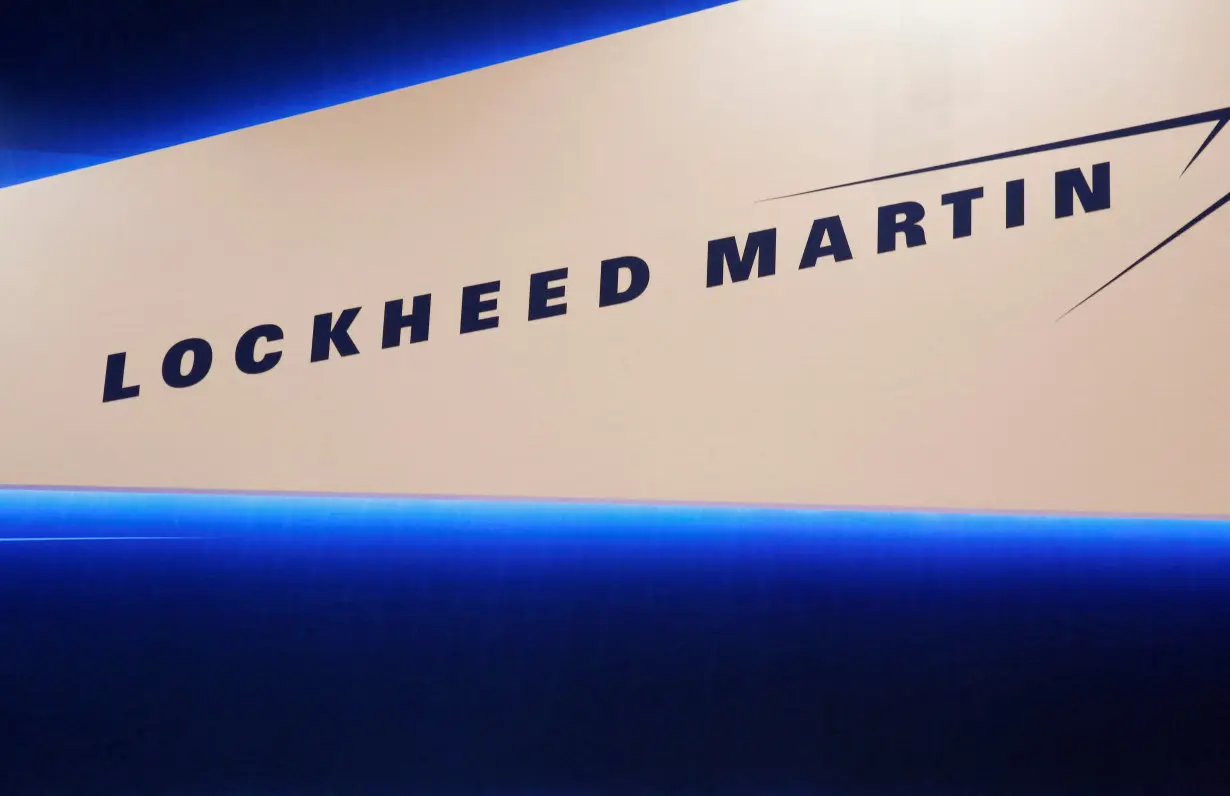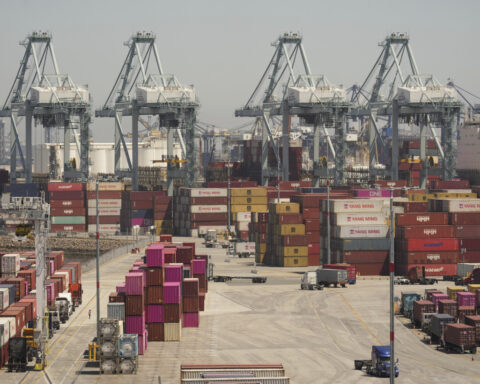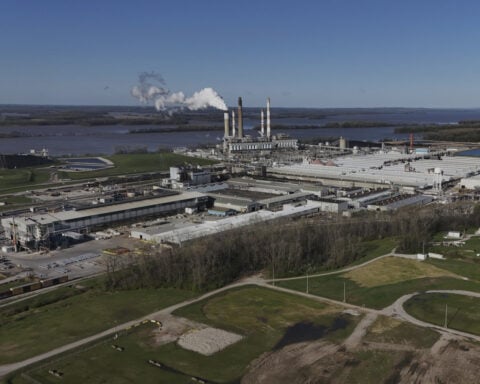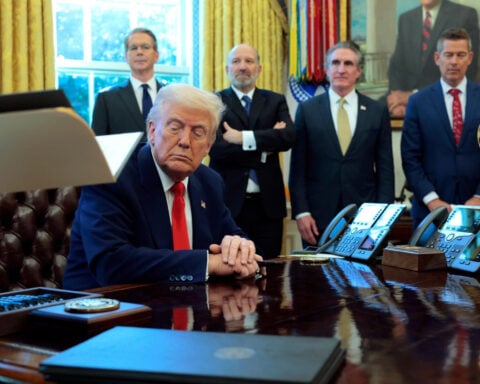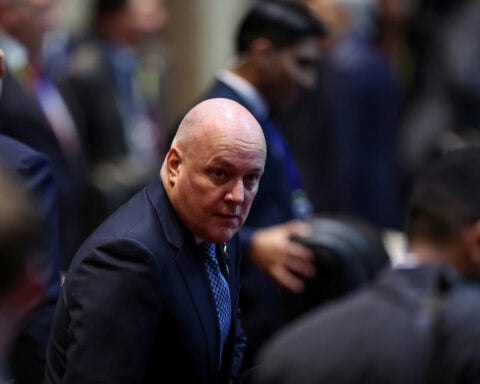By Mike Stone
WASHINGTON (Reuters) - Lockheed Martin Corp and RTX Corp, fresh off a surge of orders in response to Russian aggression against Ukraine and the war in Gaza, stand to profit from $95 billion of mostly new weapons funding as the increasingly drawn out conflicts renew demand for pricey equipment.
On Wednesday, President Joe Biden signed a hard-fought bill into law that provides billions of dollars of new U.S. aid to Ukraine for its war with Russia, including $61 billion for Ukraine and $26 billion for Israel.
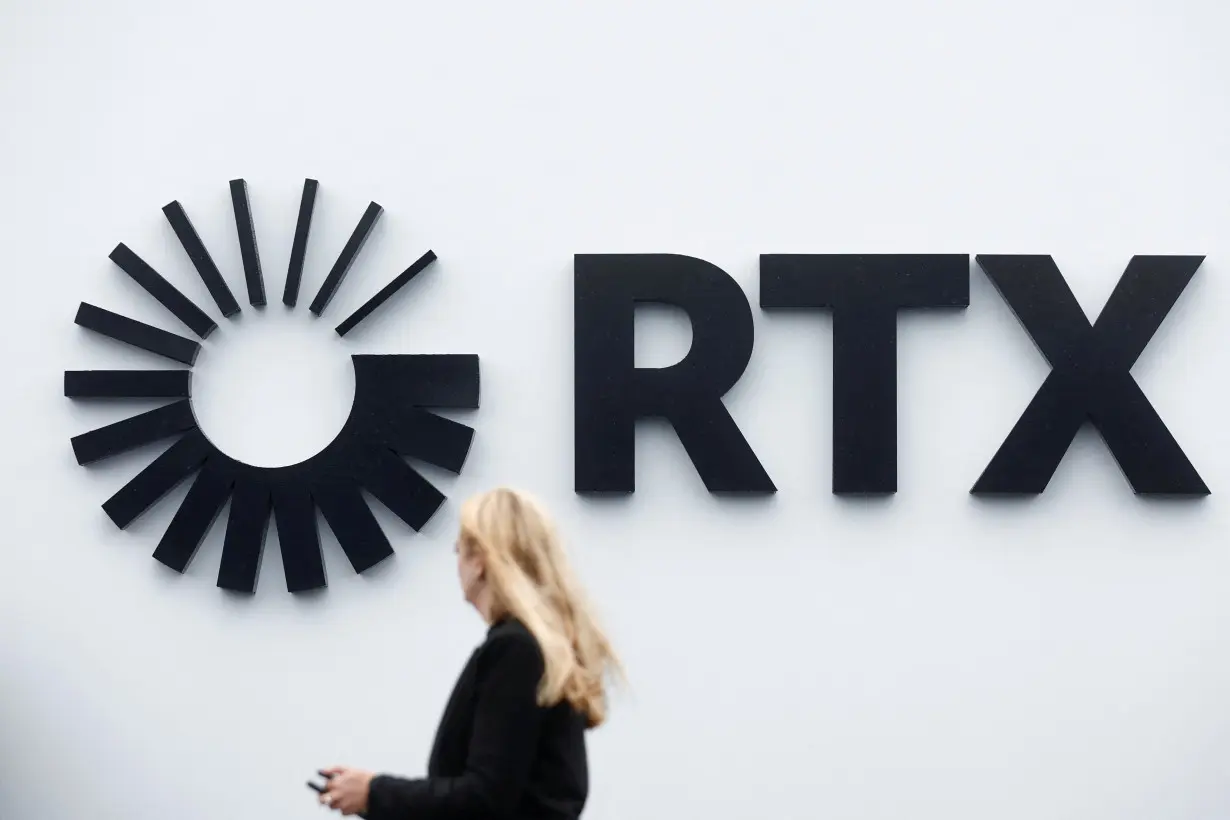
"There are now factories breaking ground around the country," because of the new funding and several recent "supplemental" funding rounds, said the Pentagon's acquisitions chief Bill LaPlante on Wednesday.
Combat in Ukraine and Israel have consumed high volumes of munitions, including Patriot air defense interceptors, used to shoot down Russian missiles, and vast quantities of 155 millimeter artillery rounds.
The new funds will pay for new shipments and be used to replenish U.S. stock piles. European allies have also been lining up to buy U.S. weaponry due to the war in Ukraine and a desire to strengthen NATO.
The United States needs to buy and restock "Tomahawk, AMRAAM, Coyote, SM-6," RTX's CFO Neil Mitchill told Reuters in an interview, listing a long-range cruise missile, an air-to-air missile, a small drone and a ground based missile that can be used for air defense. In most cases, the U.S. has either sent the munitions to Ukraine or used them to defend Red Sea shipping lanes.
Lockheed's CEO Jim Taiclet told investors on Tuesday that he expects that the fiscal 2025 "presidential budget requests and additive supplemental funding will provide a strong underpinning for future growth over the next several years for our company."
However, given uncertainty about when the funding will flow to defense firms, neither Lockheed nor RTX, formerly named Raytheon Technologies, raised their sales forecasts for 2024.
"I don't expect the flash to sales to be quicker," RTX's Mitchill said, adding he thought contracting might "a little bit faster" this time. Defense contracting is a slow and legally complex process.
"The bottom line is that, you know, we've got a lot of orders. There's $77 billion of defense in our backlog. So it'll take some time to, to meet those deliveries," Mitchill said.
RTX makes the Patriot, which stands for Phased Array Tracking Radar for Intercept on Target, surface-to-air missile defense system.
Lockheed makes the newest version of the interceptors that arm the Patriot, known as PAC-3 MSE, which cost about $4 million each, according to Army budget documents.
In January European nations banded together to buy up to 1,000 Patriot interceptors. European production for that order, a Patriot interceptor variant called Guidance Enhanced Missiles, or GEM-T, would likely be completed by COMLOG, a joint venture between RTX and MBDA, where current production capacity is limited.
But Patriot is only one of the systems where investment is needed to expand production capacity before greater revenues will flow.
In the $95 billion supplemental there is more than $17 billion earmarked for investment to expand production capacity for the U.S. defense industrial base including 155 millimeter shell production and $3.3 billion for shipyards.
(Reporting by Mike Stone; editing by Chris Sanders and Sonali Paul)

 Trump has begun another trade war. Here's a timeline of how we got here
Trump has begun another trade war. Here's a timeline of how we got here
 Canada's leader laments lost friendship with US in town that sheltered stranded Americans after 9/11
Canada's leader laments lost friendship with US in town that sheltered stranded Americans after 9/11
 Chinese EV giant BYD's fourth-quarter profit leaps 73%
Chinese EV giant BYD's fourth-quarter profit leaps 73%
 You're an American in another land? Prepare to talk about the why and how of Trump 2.0
You're an American in another land? Prepare to talk about the why and how of Trump 2.0
 Chalk talk: Star power, top teams and No. 5 seeds headline the women's March Madness Sweet 16
Chalk talk: Star power, top teams and No. 5 seeds headline the women's March Madness Sweet 16
 Purdue returns to Sweet 16 with 76-62 win over McNeese in March Madness
Purdue returns to Sweet 16 with 76-62 win over McNeese in March Madness
